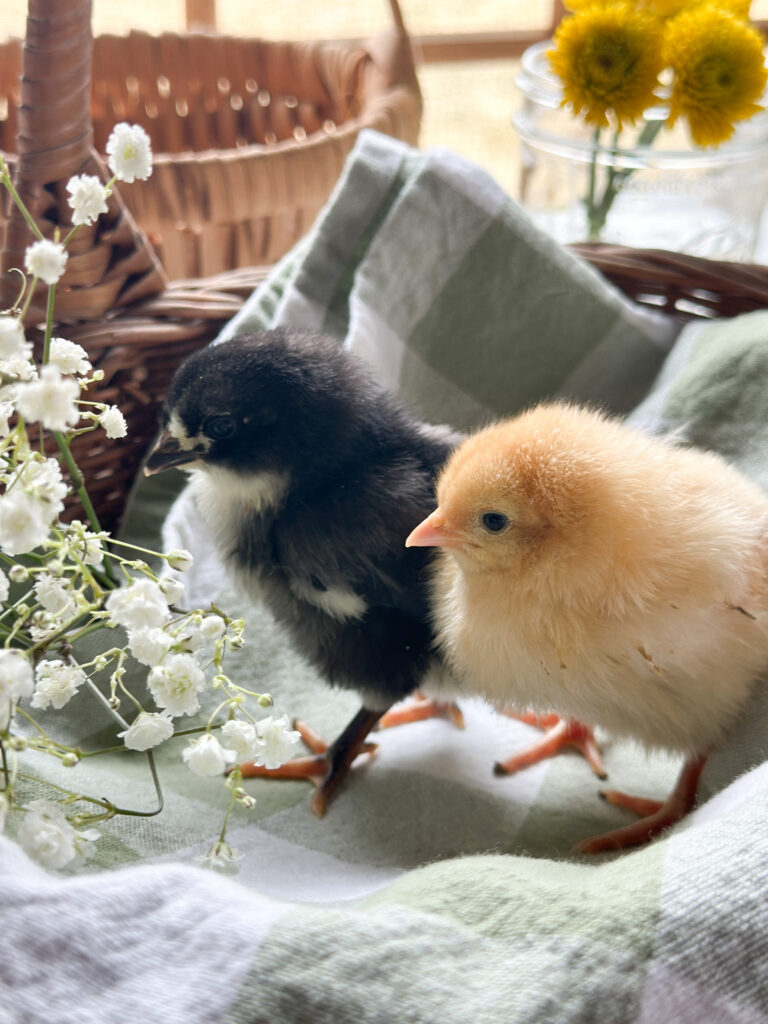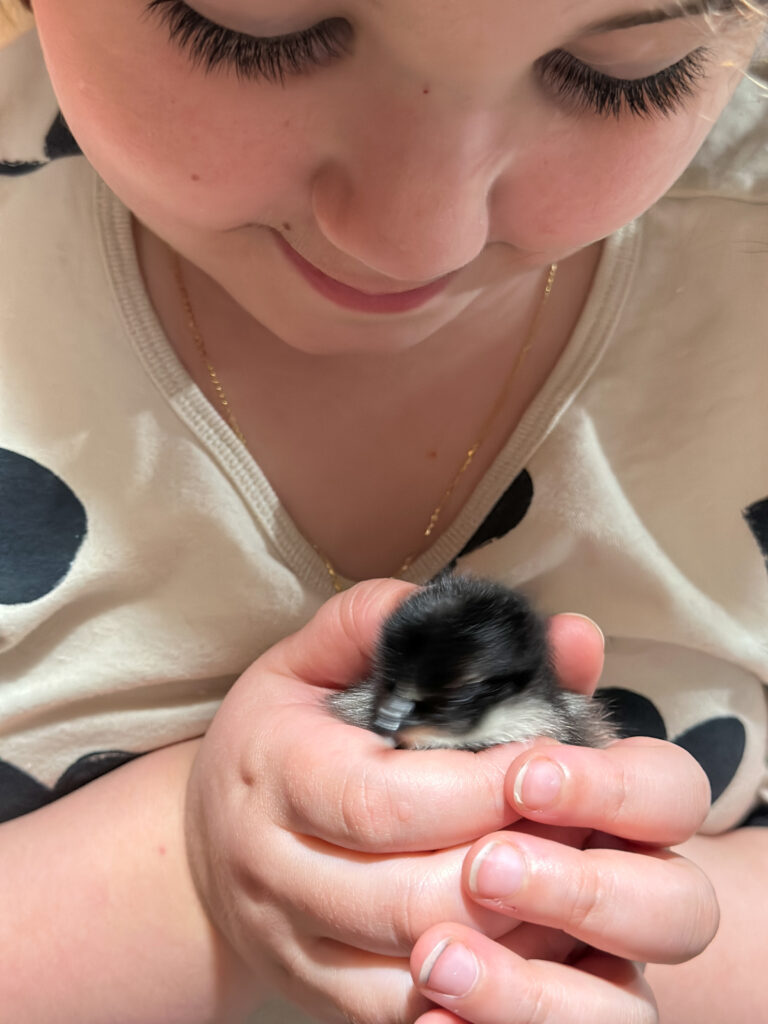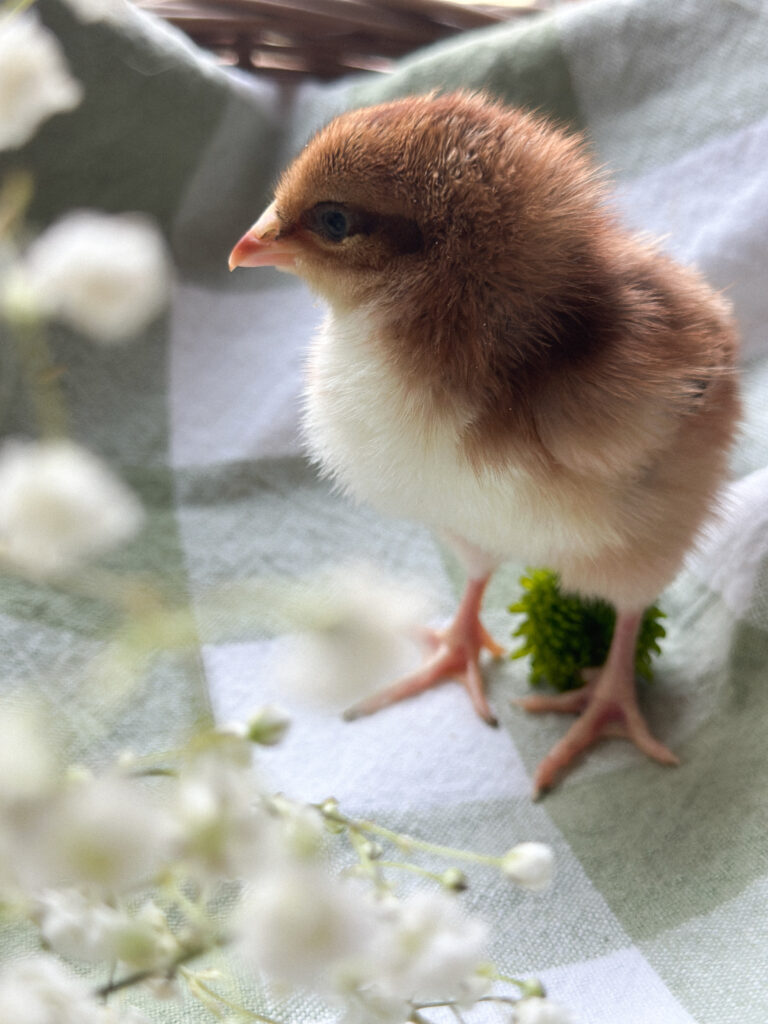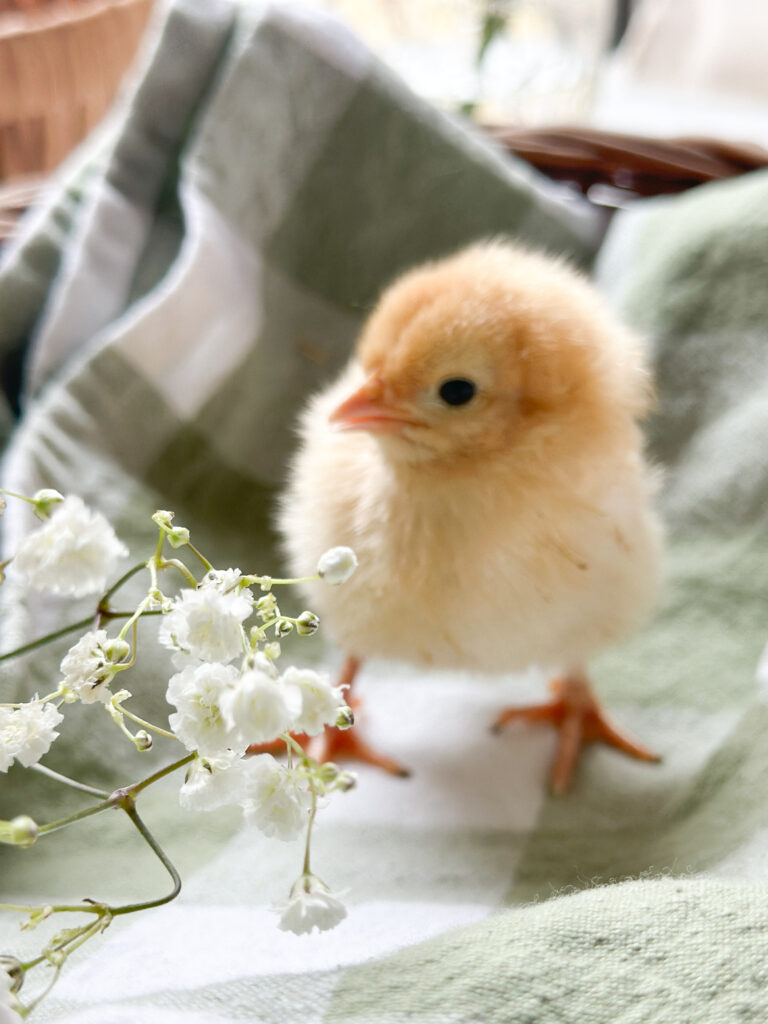Spring is just around the corner, and if you’re like many farm loving homesteaders, you’re already dreaming of fluffy baby chicks peeping around your farm. Raising baby chicks is one of the most rewarding steps toward self-sufficiency and sustainable living—but preparation is key! Whether you’re a seasoned chicken keeper or a beginner on your homestead journey, this Baby Chick Prep Guide will walk you through everything you need to get ready for your new flock.
Why Preparing for Baby Chicks is Essential
When chicks arrive—whether from a hatchery, local feed store, or your own incubator—they’ll depend on you for warmth, nutrition, and care. Setting up their space in advance ensures healthy, happy chicks and a smooth transition to your homestead.
Want to see me get ready for my baby chicks? Visit my Instagram @norabloom_
Baby Chick Prep Checklist
1. Set Up a Brooder
A brooder is a safe, warm environment where your chicks will spend their first 6-8 weeks. You can purchase one or DIY using a stock tank, large plastic bin, or wooden box. We built one from BEST COOPS on ETSY. Make sure it’s draft-free, secure from predators, and has tall enough sides to keep curious chicks contained.
- Size: About 0.5 square feet per chick to start, increasing as they grow.
- Bedding: HEMP (avoid cedar), straw, or paper towels for the first few days. We got ours from Eaten Pet & Pasture.
2. Heat Source
Chicks can’t regulate their body temperature right away. A heat lamp or brooder plate is essential. We prefer a heat plate. Heat lamps can be very dangerous. I keep one on hand only for backup as needed.
- Temperature Guide:
- Week 1: 95°F
- Reduce by 5°F each week until fully feathered.
Pro tip: Watch the chicks’ behavior—if they huddle under the heat source, it’s too cold; if they avoid it, it’s too warm.
3. Chick Starter Feed
Baby chicks require a high-protein starter feed (18-20%) formulated just for them. We love Starter Mash from Scratch & Peck Feed.
4. Fresh, Clean Water
Hydration is critical! Use a chick waterer to prevent drowning and add electrolytes for an immunity boost during their first week. We add marbles to the water plate so there is not a chance of drowning.
- Refresh water daily, or more often if it gets soiled.
5. Grit for Digestion
If you plan to introduce treats or greens early, offer chick-sized grit to help them digest their food. We love Starter Grit from Scratch & Peck Feed.
Bonus Tips for a Smooth Chick Arrival
- Order ahead: Place your chick order early with a reputable hatchery to secure your desired breeds.
- Prepare for mess: Chicks love to scratch and kick bedding into feeders and waterers.
- Socialize early: Handle them gently to raise friendly hens.
- Have a long-term coop plan: They’ll outgrow the brooder fast!
Common Questions About Baby Chicks
When can my chicks go outside?
Once fully feathered (around 6-8 weeks), they can explore outdoors during warm days under supervision.
Do I need a rooster for eggs?
Nope! Hens will lay eggs without a rooster; you only need a rooster if you want fertilized eggs for hatching.
What breeds are best for a homestead?
Heritage breeds like Buff Orpingtons, Rhode Island Reds, and Barred Rocks are great for cold-hardiness and egg production. Our favorites are Buff Orpingtons, Australorp, and Speackled Sussex.
Our favorite hatcheries: Murray McMurry Hatchery, Myer Hatchery, and Sweet Chicken Homestead
Ready to Welcome Your Chicks?
With the right setup and a little patience, raising baby chicks can be a joyful addition to your homestead farm. They’ll not only provide fresh eggs but also enrich your soil, control pests, and bring plenty of charm to your daily life.






